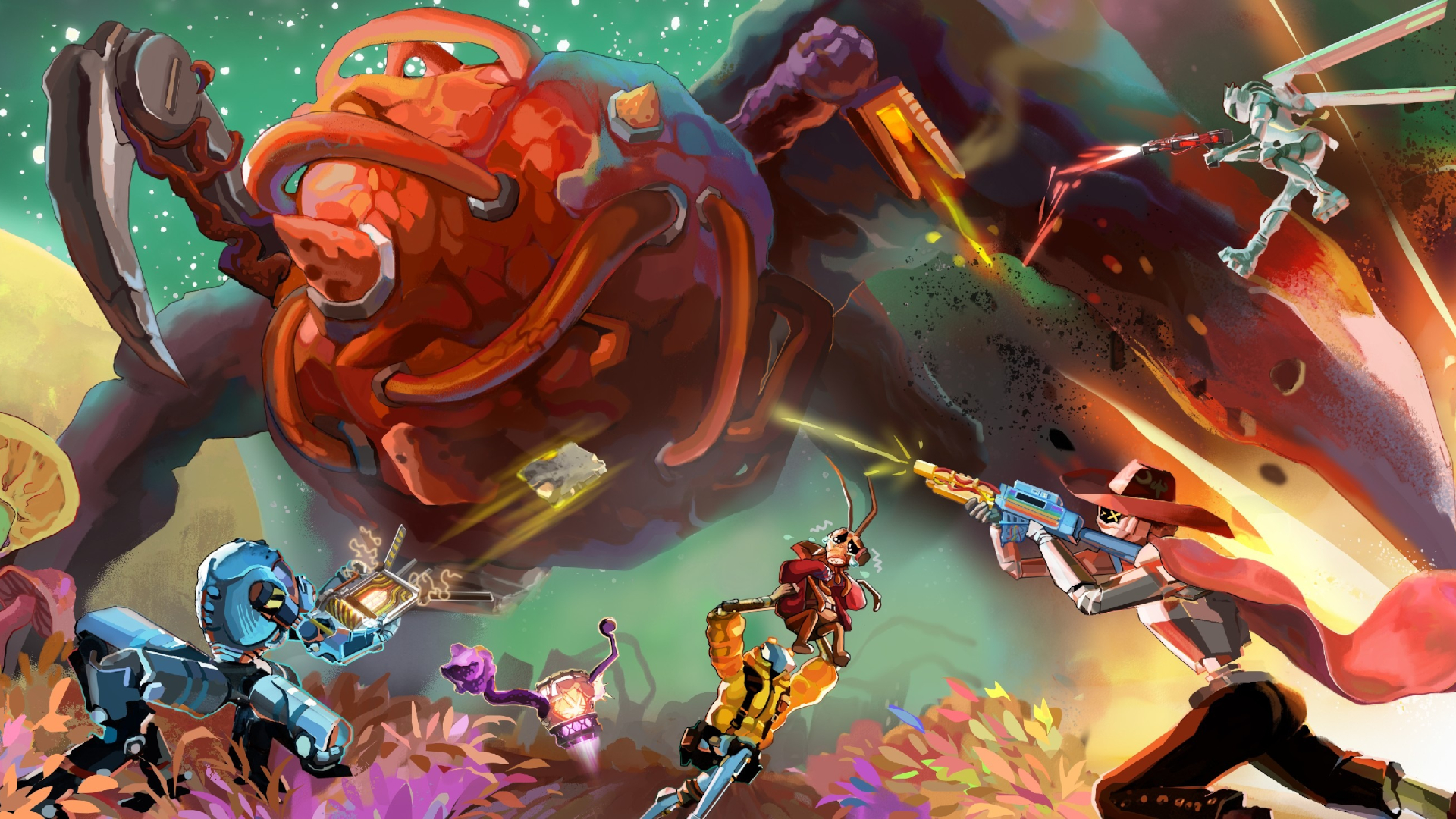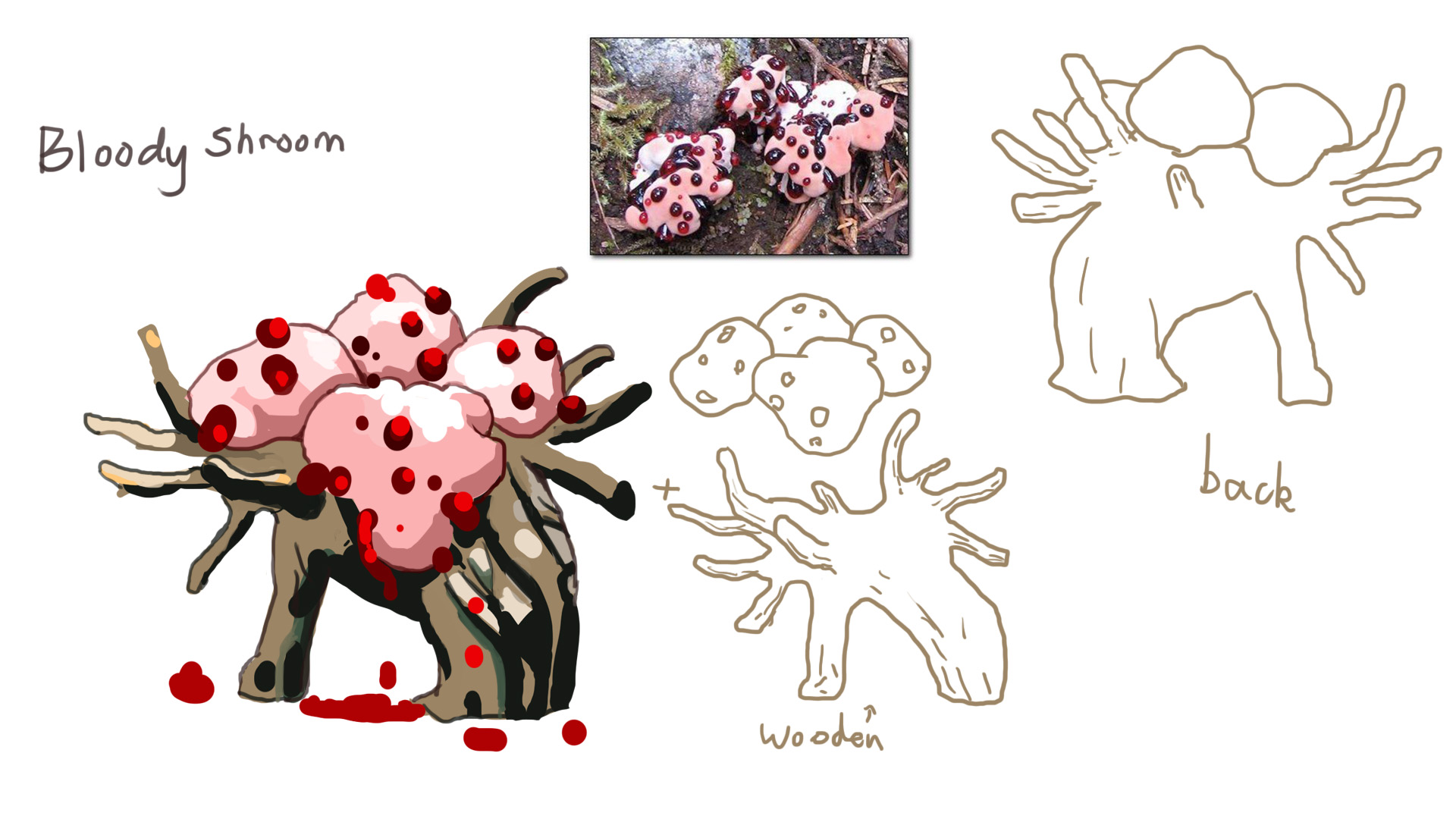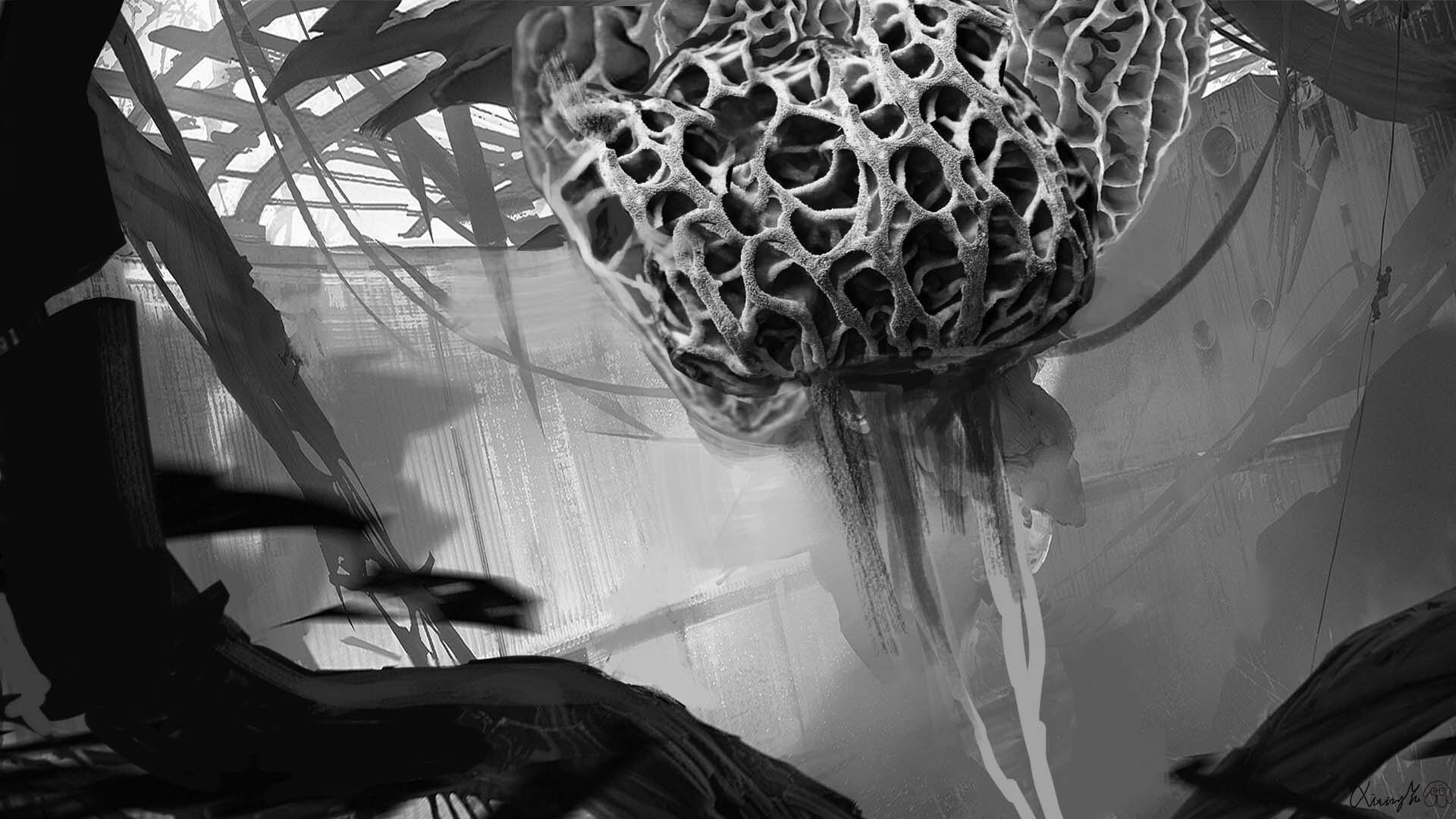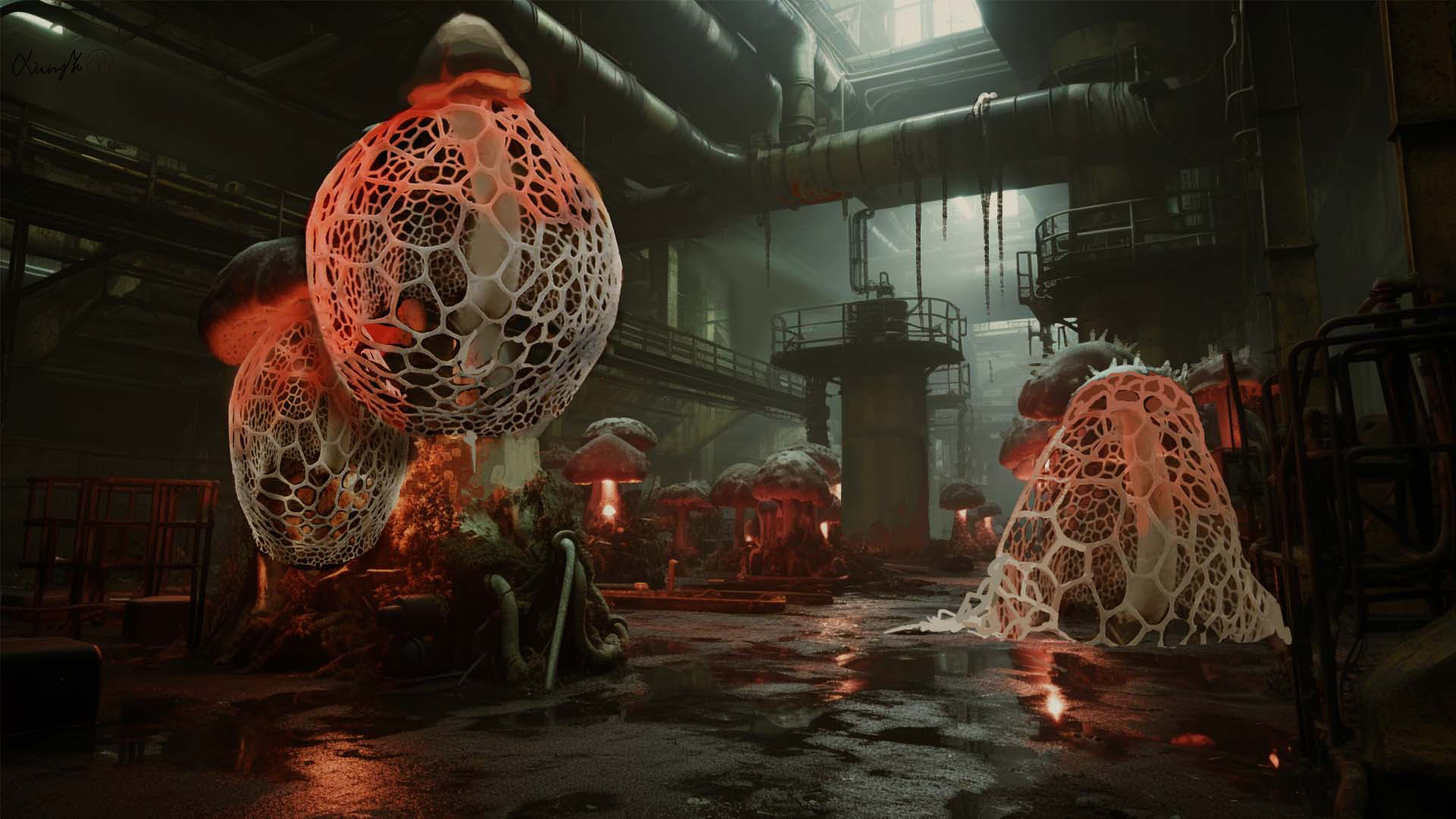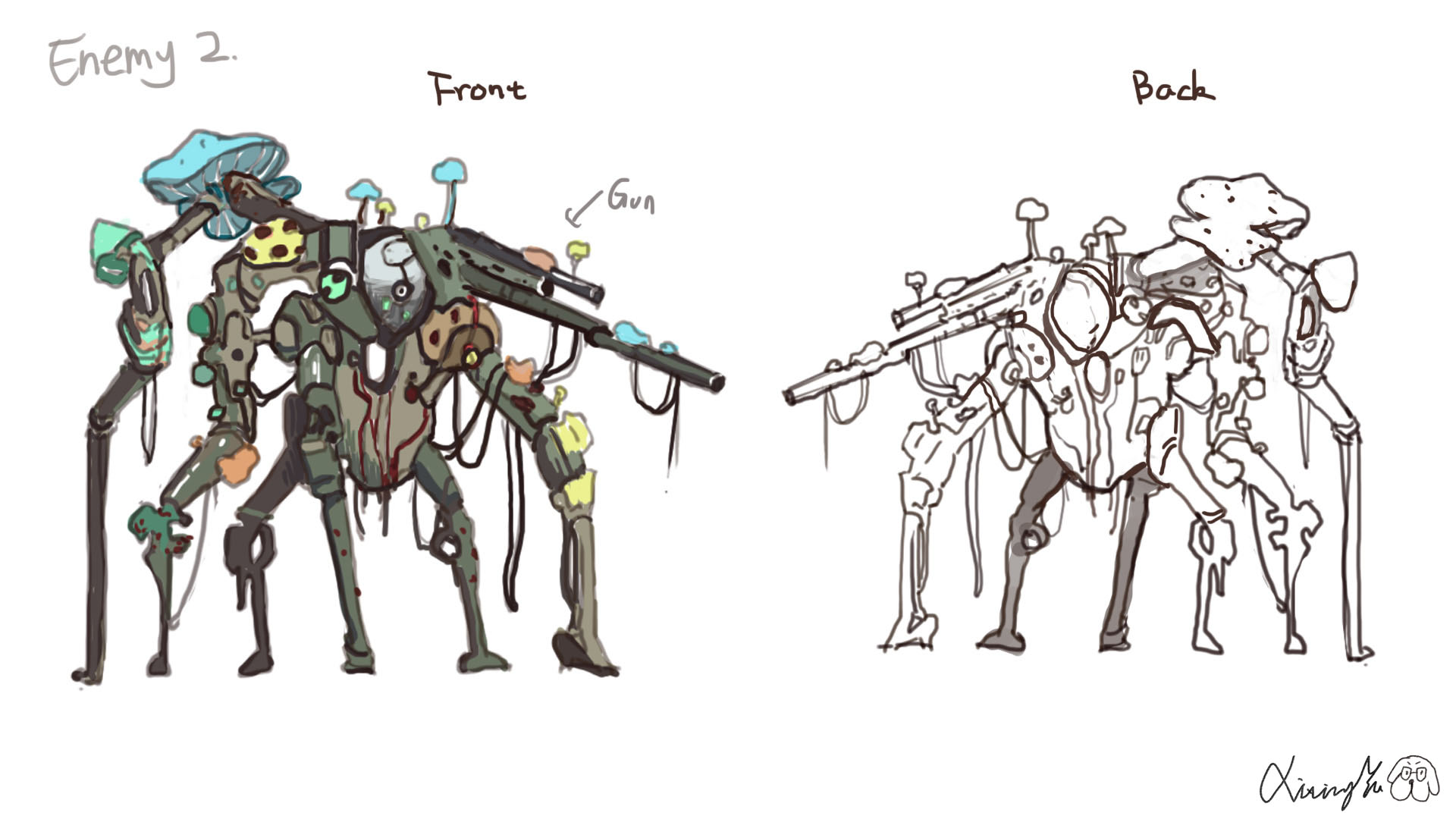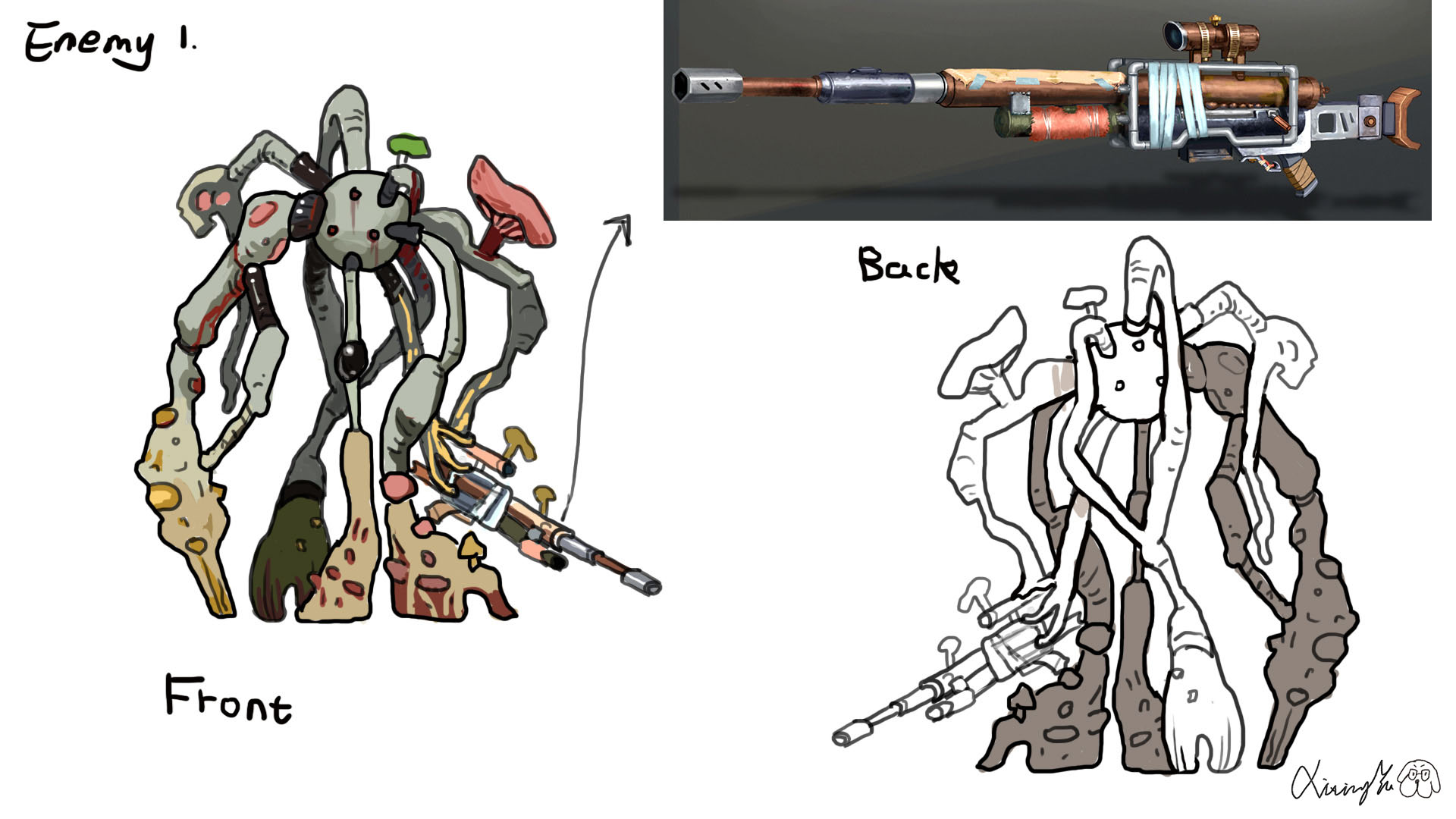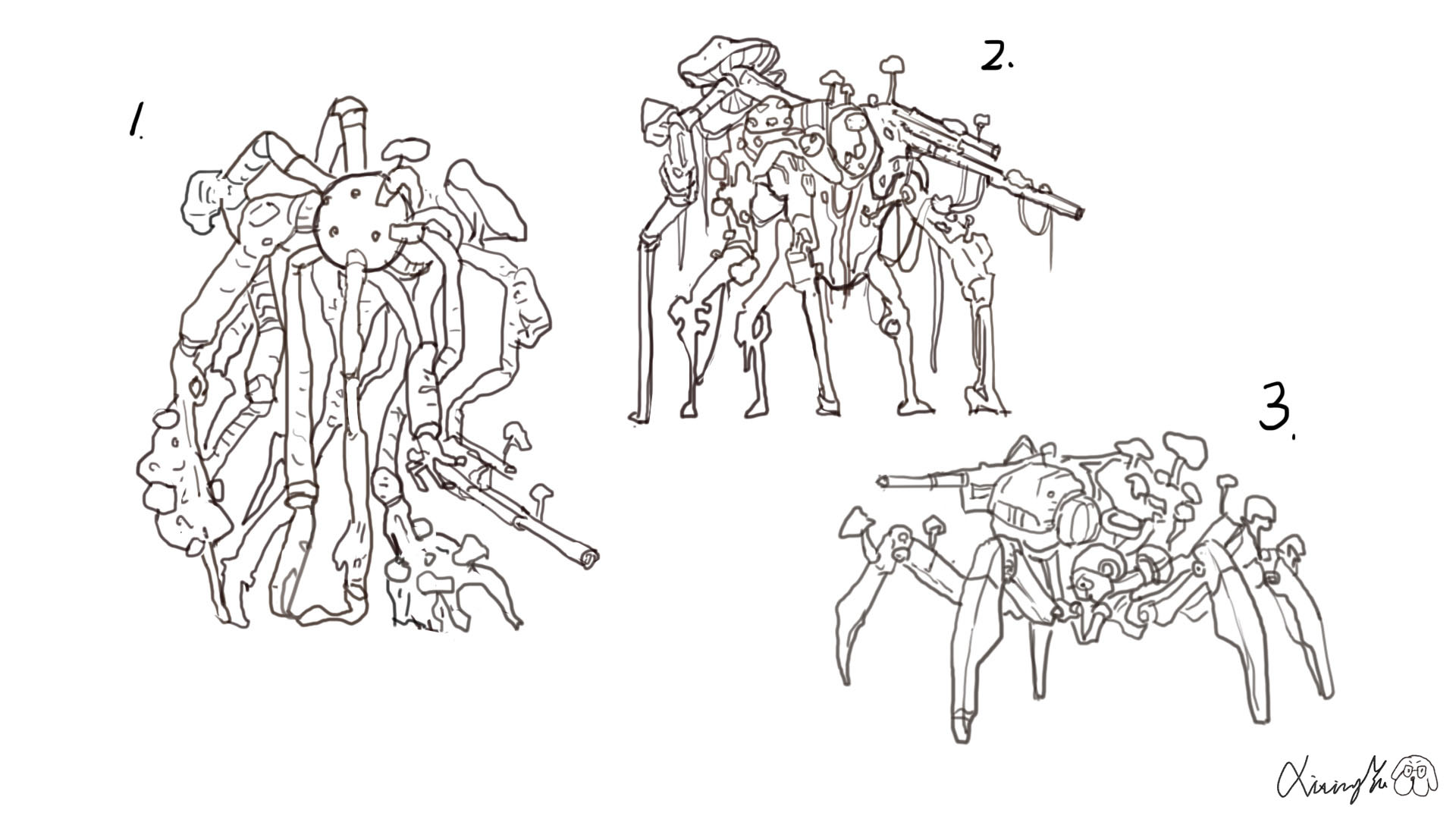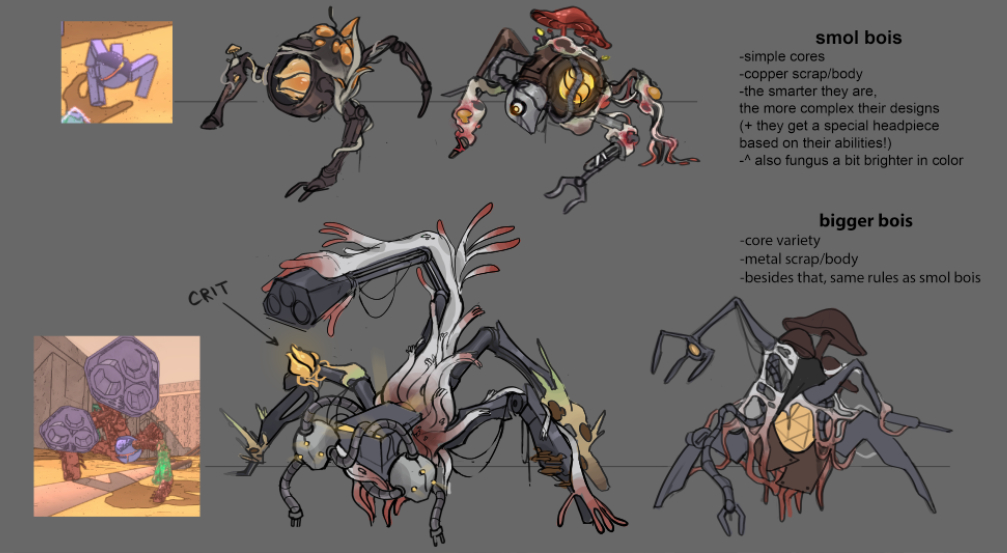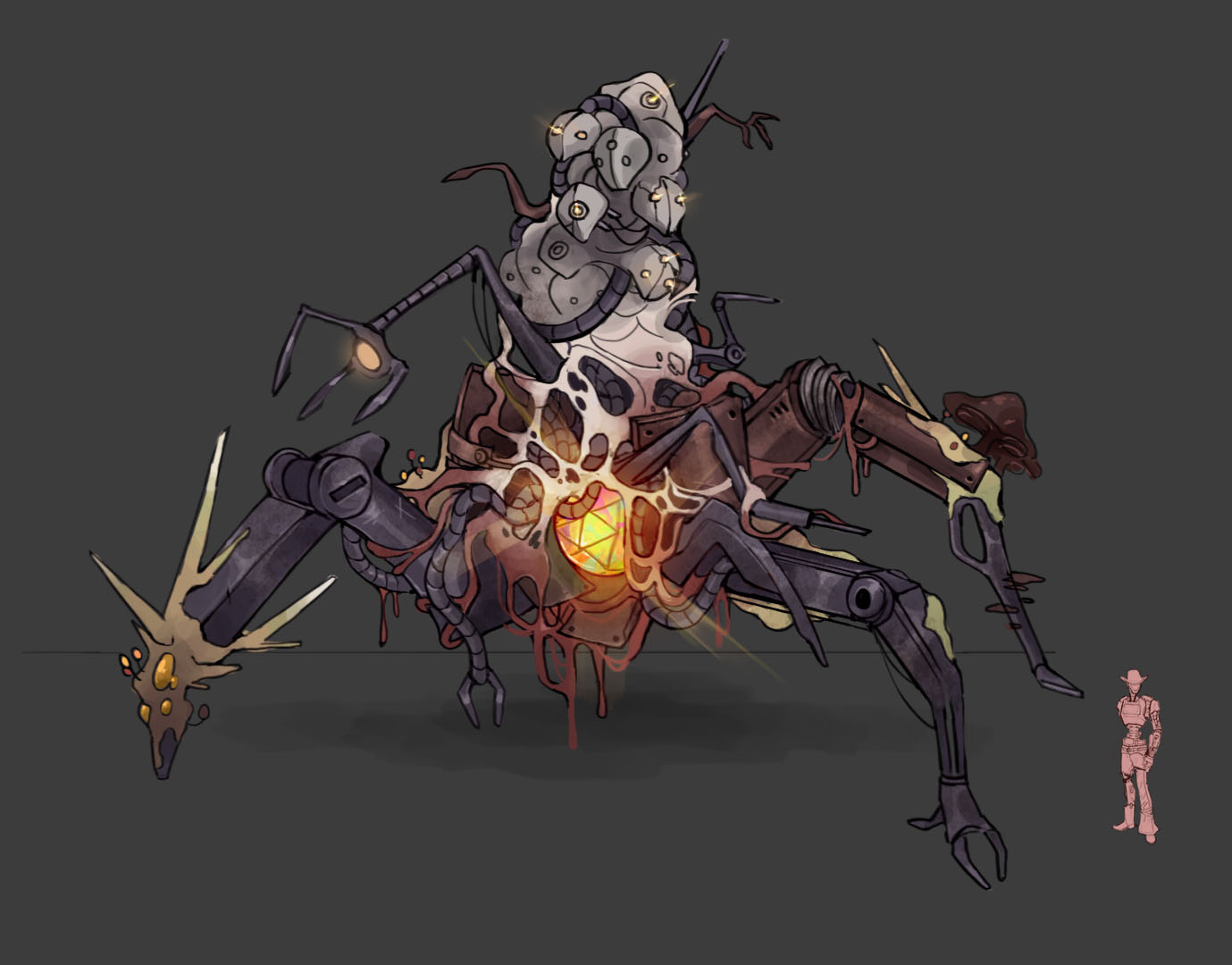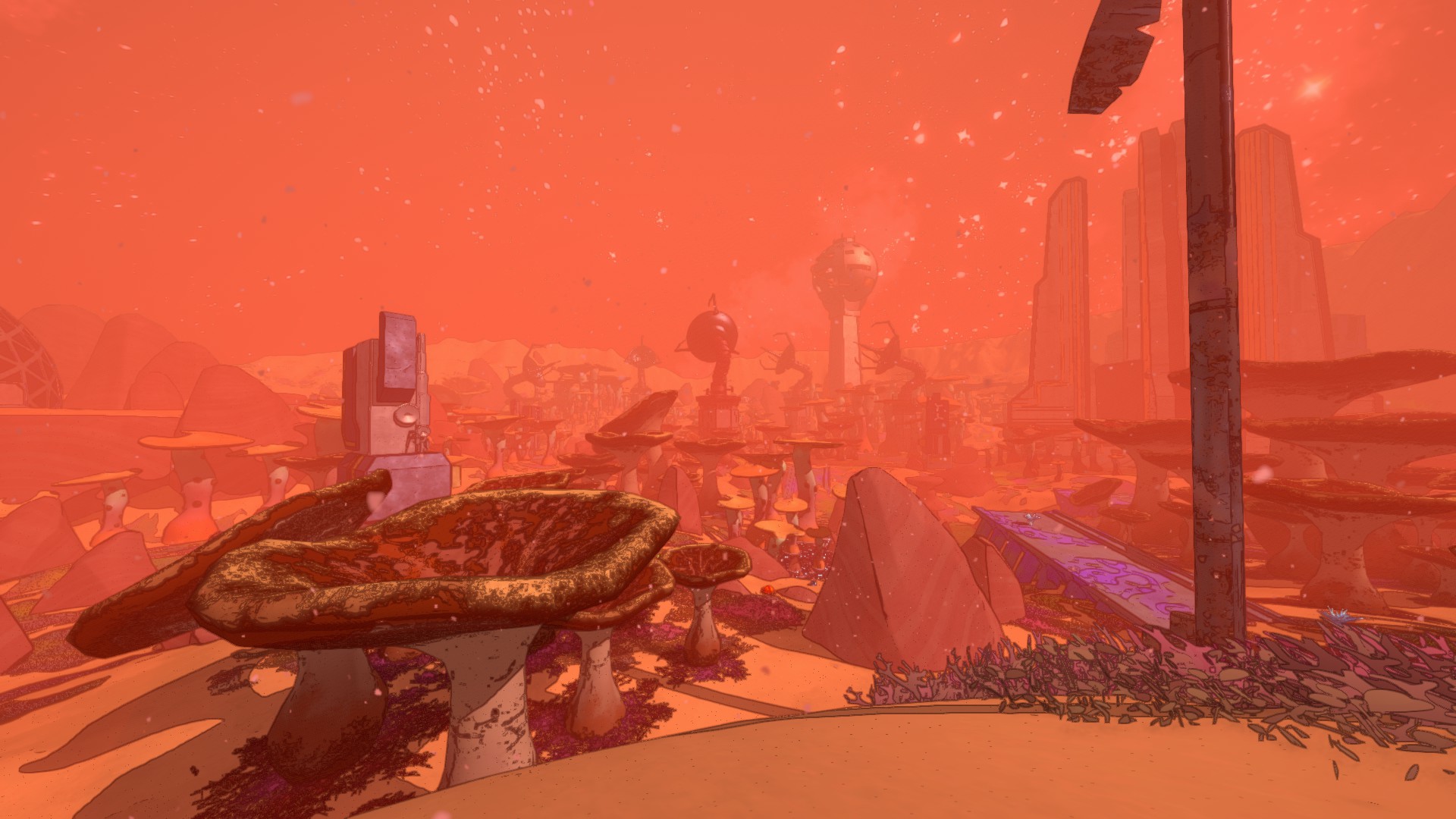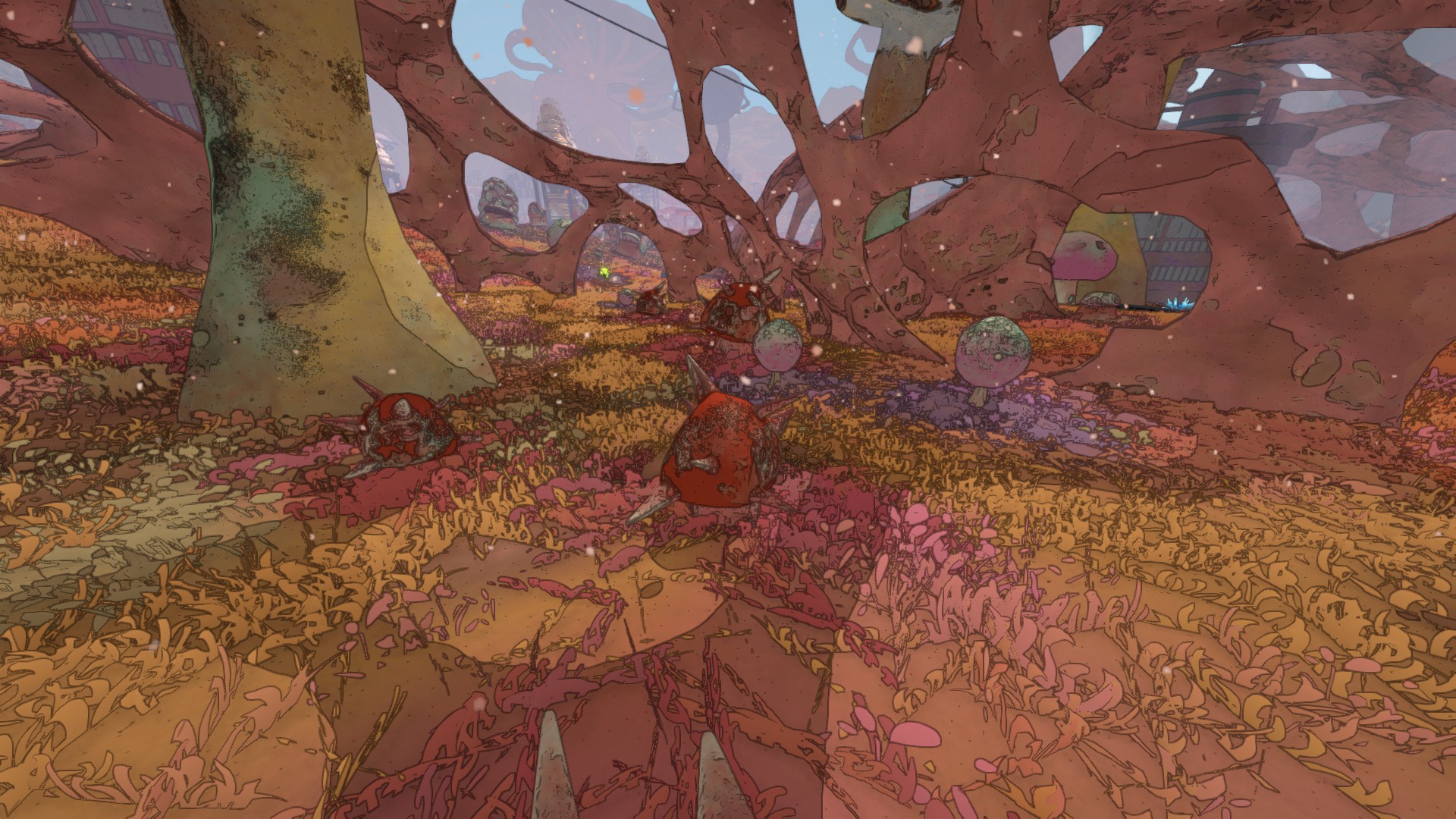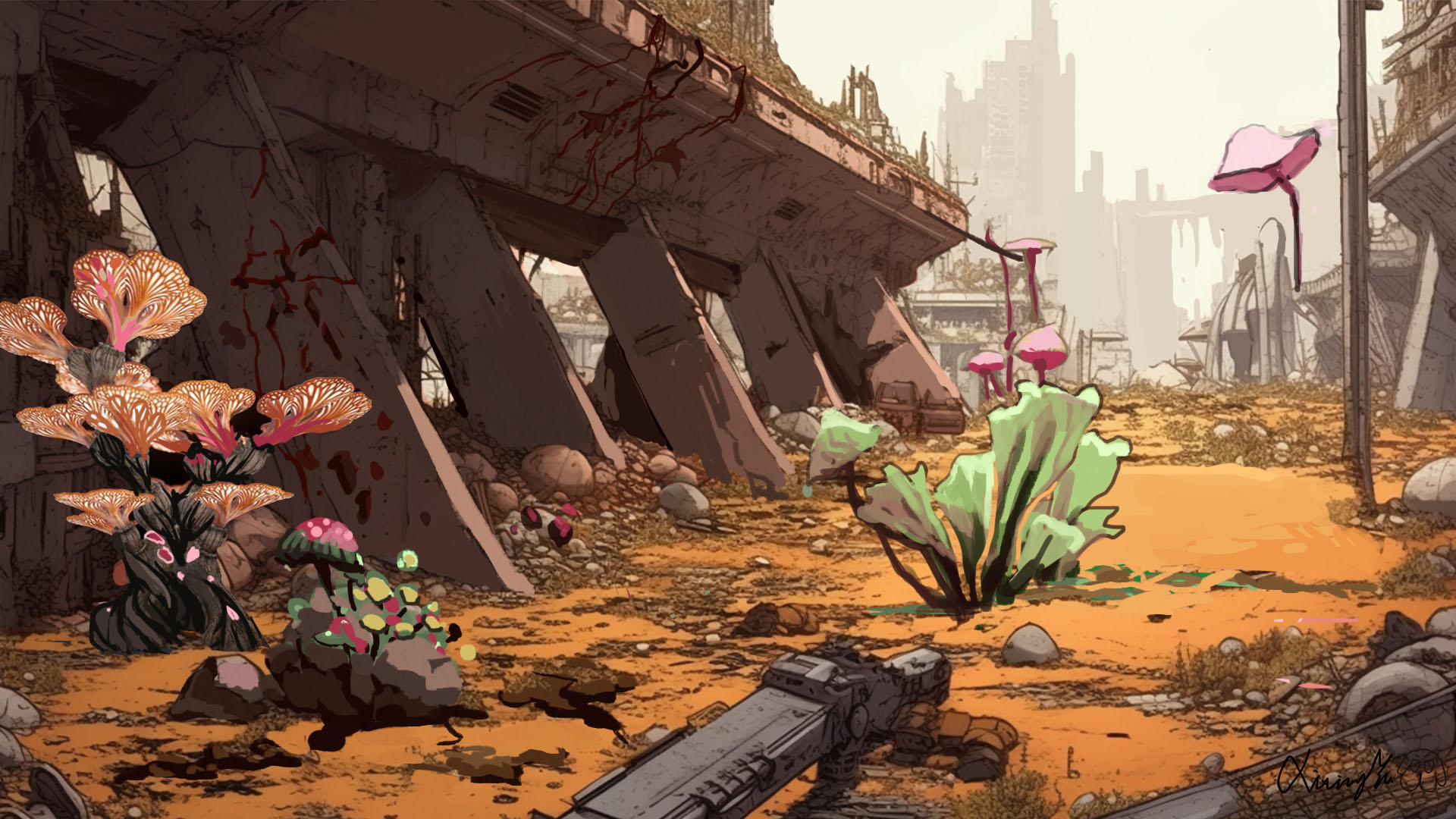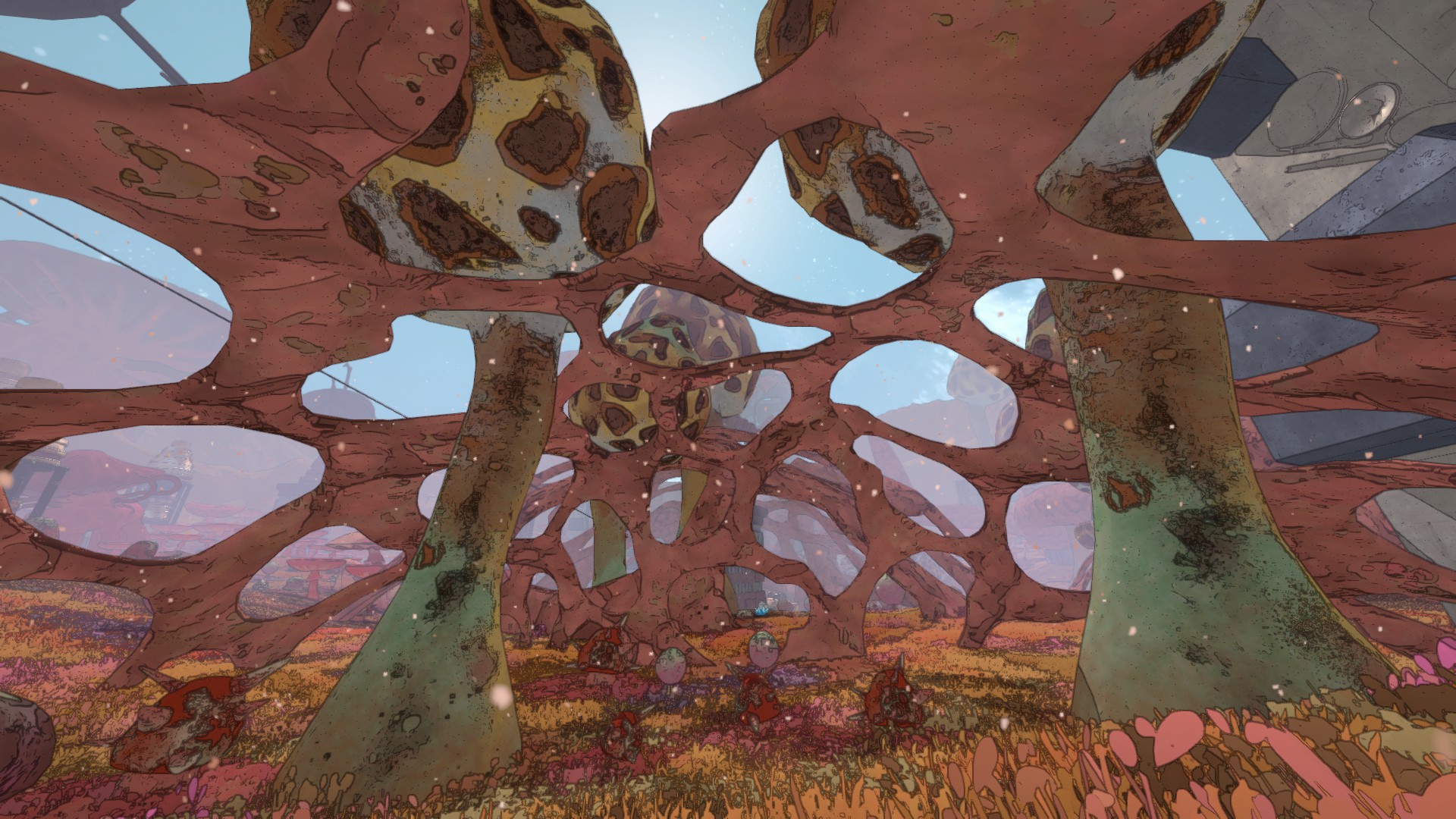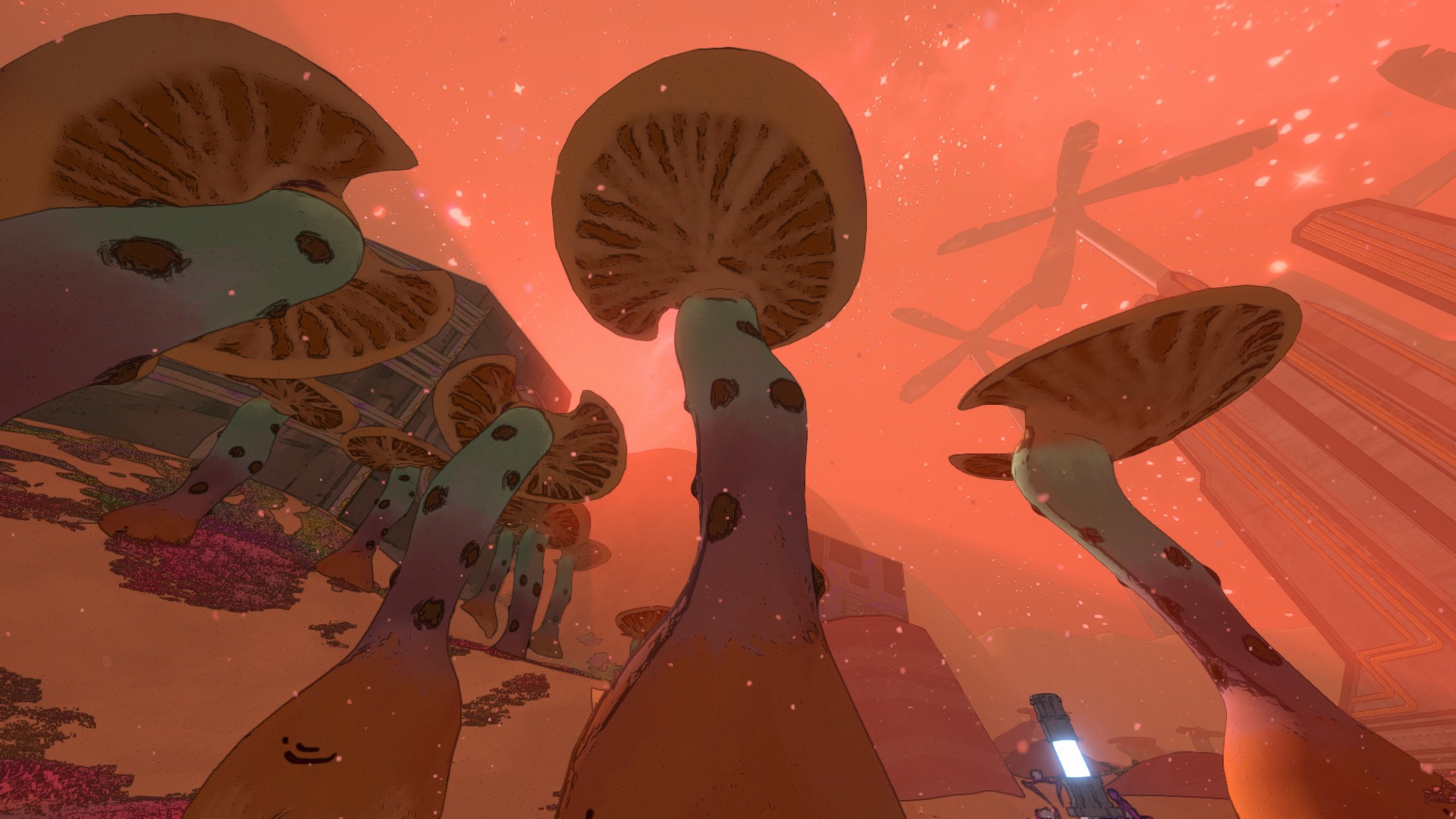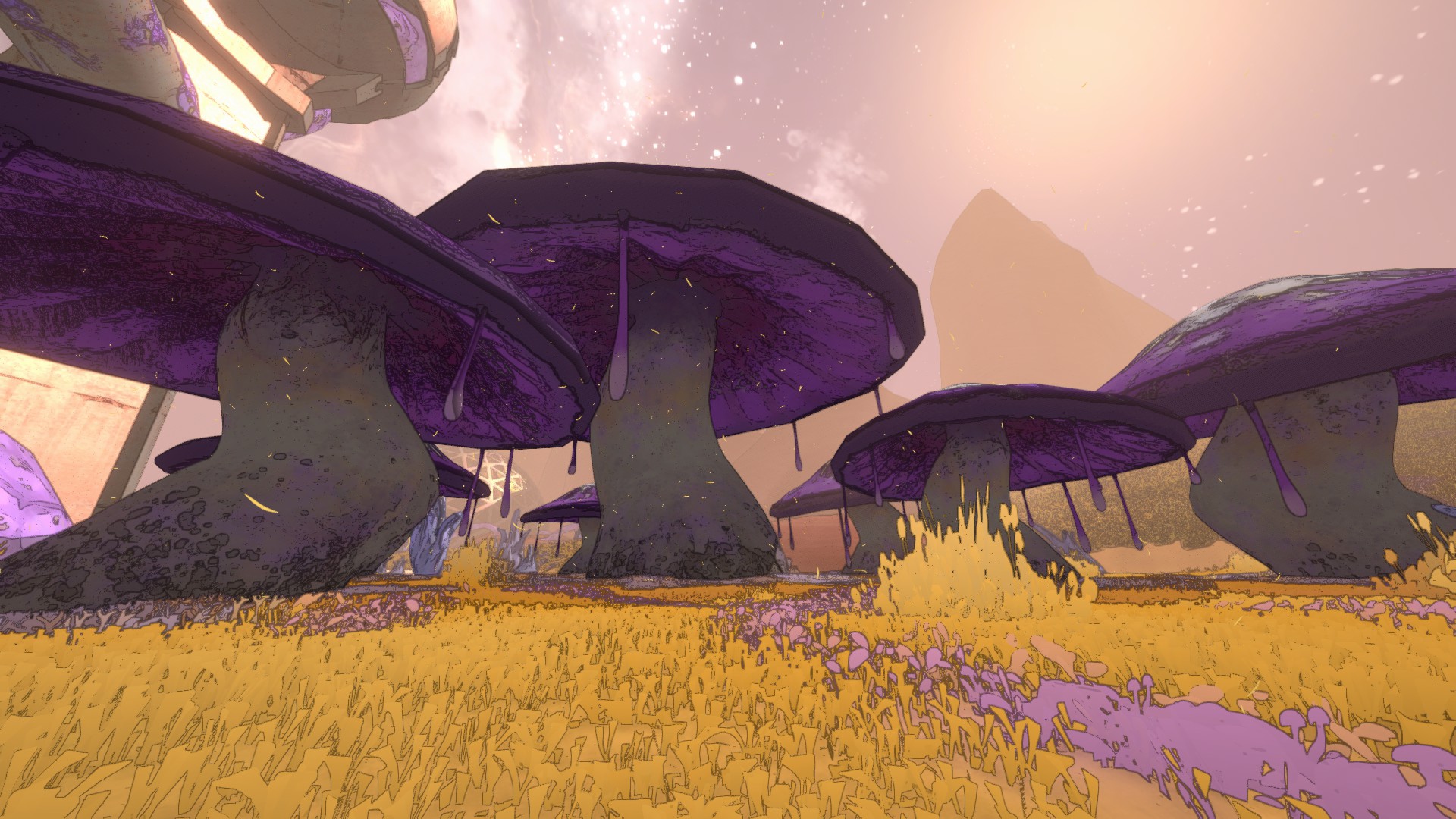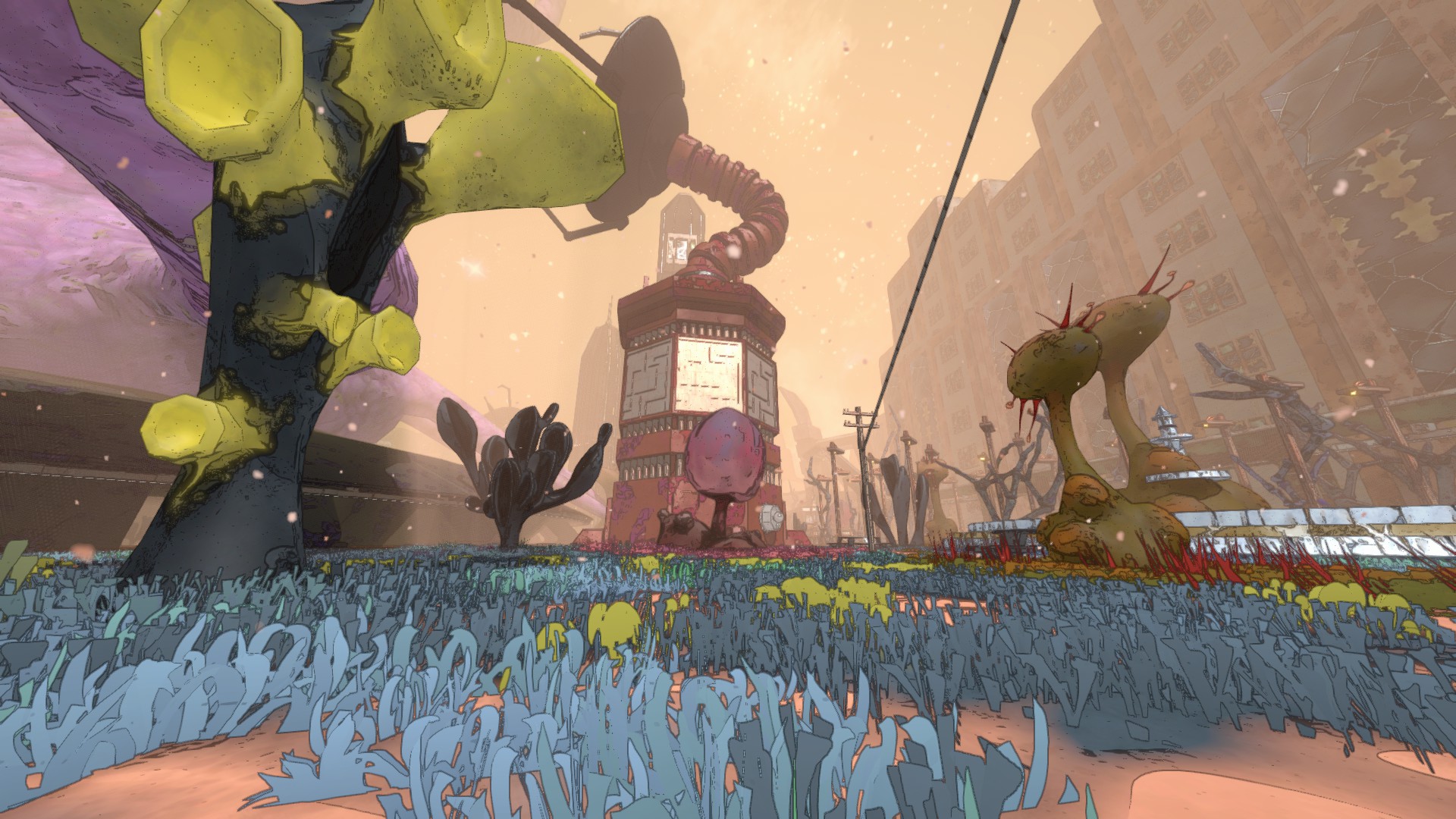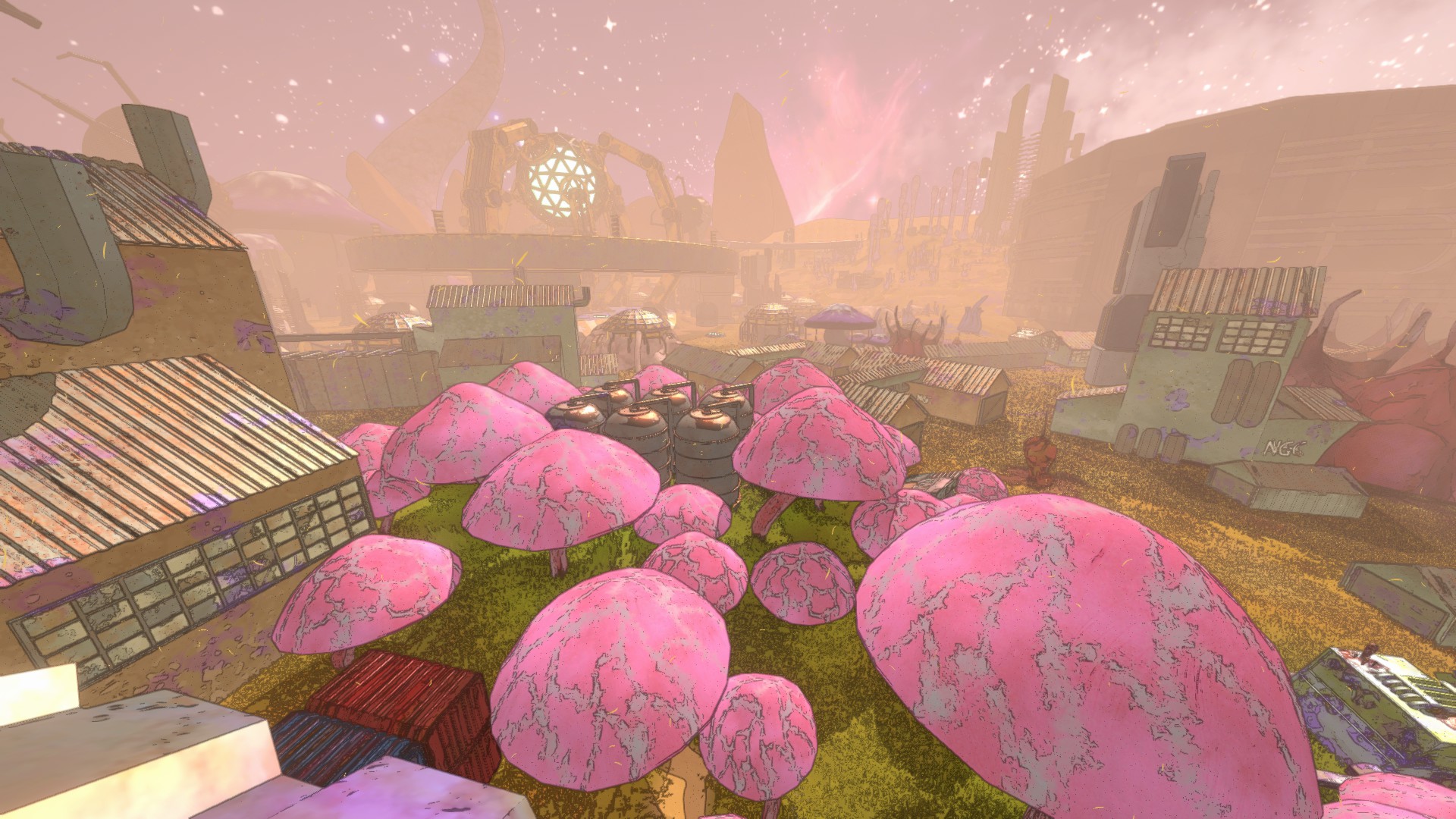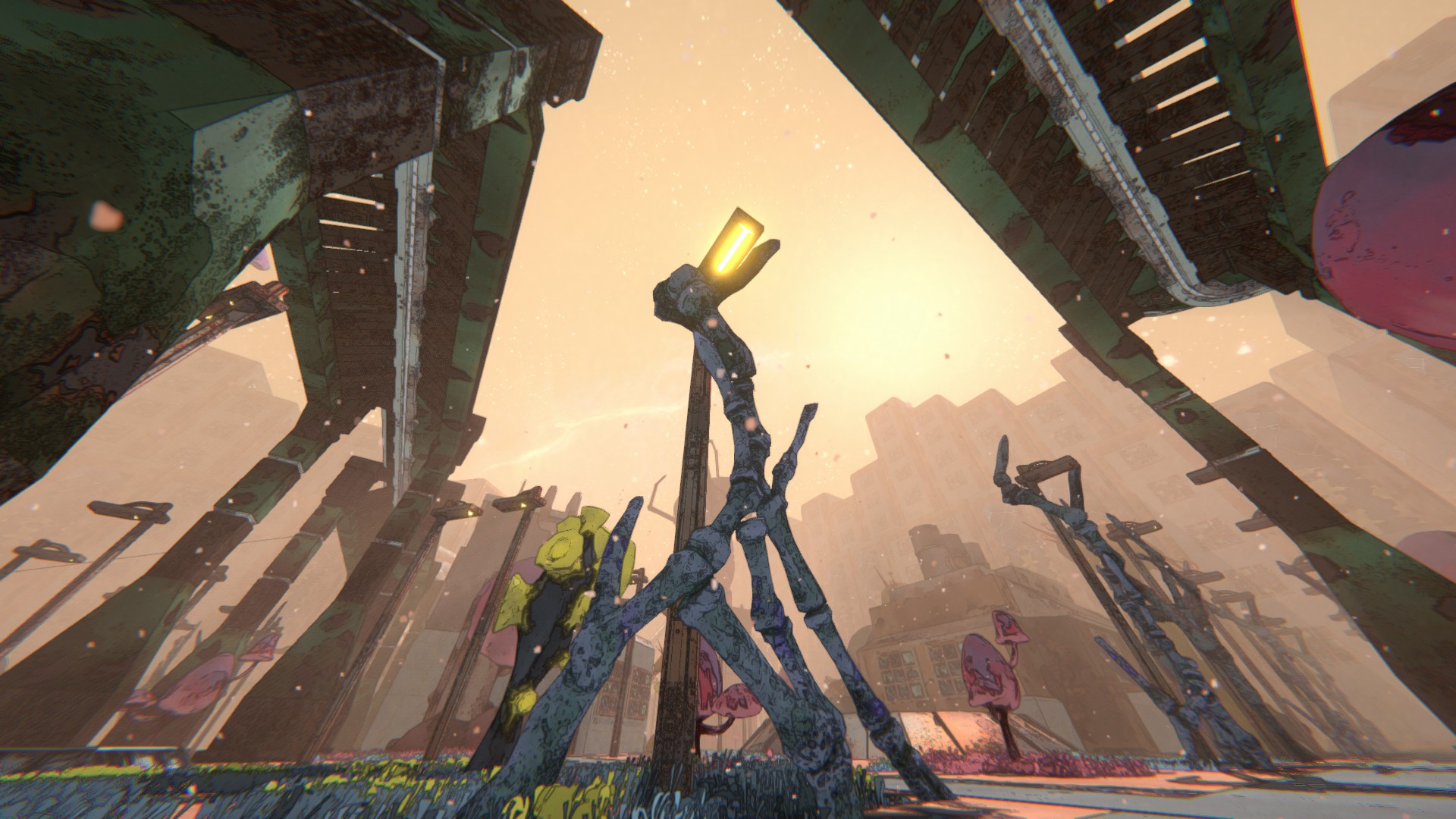
If you’re a fan of co-op sci-fi action games, your sights are almost assuredly set on Borderlands 4 this year, but Pigeons at Play’s Mycopunk is taking big swings in a smaller (and easier to digest) scale this summer: A squad of robots working for a massive corporation is tasked with eliminating a “planet-wide fungal catastrophe” which includes… fungi with access to lasers and other technology.
No, we’re not kidding.
Mycopunk is a fast-paced online solo and co-op shooter that has just launched into early access on PC (via Steam), and we were instantly fascinated by its cartoony yet slightly distressing take on fungi gone wild in a sci-fi setting. The development team at Pigeons at Play, alongside concept artists Lily Yu, Nicholas Wong, and Seungmi Yang, were kind enough to tell us a bit about their inspirations to create the enemies and how the Devolver Digital-published game’s visual presentation and tone evolved since its inception.
Early on, “the game was leaning much more towards horror, with a much more sinister version of the fungus.” Still, fun enemy designs – such as one pictured above based on the Hydnellum peckii (bleeding tooth fungus) – already started to come together.
“The inspiration comes from classic sci-fi comics and movies. I sometimes look at Akira and work from Moebius, or just watch BBC documentaries. Oil paintings played a huge part in my rendering techniques,” Yu revealed.
Once the narrative and worldbuilding started coming together, the team “dug into the idea of a mycelial network spread across an entire planet,” which altered the ecosystem and even took over mechanical components. Of course, this directly affected the enemy design, especially as the game’s difficulty levels ramp up. (Trust us, things get hairy.)
“Our enemy design ended up changing quite drastically over time to match better with what Mycopunk was turning into.” As you might be able to infer from the final images of the game itself and the launch trailer, the final presentation is much more colorful and comedic. Get ready to sweat and fight for every victory, all the same though.
Yang elaborated on the ‘grunt’ designs (find them below) and how the fusion of metal and organic parts came together: “We wanted them all to be arachnid/spider-like, and the idea of procedural limbs and a vulnerable ‘core’ were heavily kept in mind during early conceptualization… Off the top of my head, the main inspiration was Warframe (Nidus & the Grineer)… I wanted the enemies to have faces since I thought that’d make them creepier and have a stronger identity, but that never really landed.”
Eventually, most of the game’s horror roots were left behind. “Our enemy designs had to change a lot for gameplay reasons as fighting the horde can get incredibly chaotic… But throughout the changes, we strove to keep the core identity of the enemies the same, as these little fungal critters that use hijacked machinery to arm and armor themselves.”
The best example might be the gigantic ‘abominations’ that use larger chunks of tech and machinery. “The enemies are procedurally generated, so they can look different every time you see them,” added Yu.
When it came to designing the post-fungal takeover planetary surface, “the basic principle was to take the best parts about little mushrooms and blow them up.” As players explore different biomes on the same planet, they’ll also notice differences beyond size, as seen in the pictures below.
About the research process, Wong said the following: “I try to look for real fungi that grows in that real environment… So when we were designing the city, I found an article about NYC’s fungi biodiversity.” The standard procedure was to make them “fantastical or strange” by enlarging and multiplying the fungi, but another approach was to look “at organic objects like fingers, organs, or raw chicken” to create “a creepy look” for the fungi across enemies and infested levels. “We really want to make the fungus feel like it’s almost a completely separate ecosystem that has buried its roots in an established system and completely upended it.”
Mycopunk’s run-and-gun action has yet to target consoles, and we won’t be seeing a 1.0 release until at least six months have passed, but it’s already found an audience who was looking for the next uncomplicated co-op shooter sensation.
After playing through a few missions ourselves and tinkering with character and weapon upgrades, we think it has the potential to become a go-to ‘lunch break’ game without feeling overwhelming.
Mycopunk is available now on PC via early access on Steam. It currently costs $14.99.
